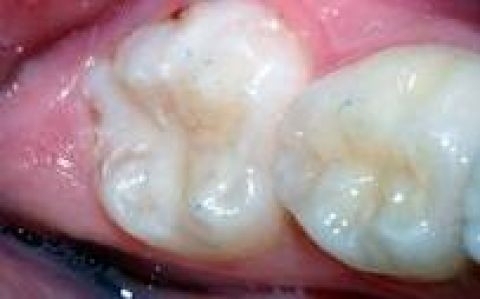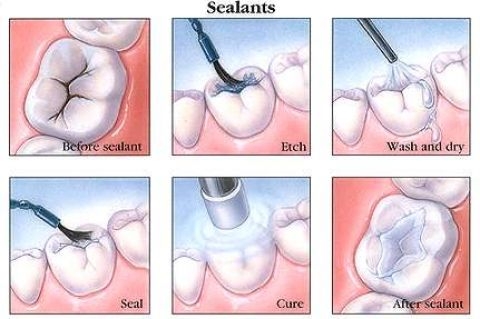Table of content
Groove fillings prevent tooth decay by using sealant (composite or glassionormer) to fill holes and slots on the chewing surface of permanent molar tooth to prevent the early formation and development of tooth decay.
Why groove filling?
According to some studies, the rate of decayed chewing surfaces in teeth is very high, making up 90% of total cases.
Because there are many holes and slots in the anatomical chewing surface, it is hard to clean them with a brush, and the remaining food creates the conditions for bacterial plaque development, leading to decay. Groove decay rapidly develops and is related to the depth of the holes and slots.
Six-to-twelve-year-old children have 6th and 7th teeth. These are early growing permanent teeth, having a chewing surface with many holes and slots, located at the back of the upper jaw—so they’re hard to clean. At this stage, the teeth have erupted but the calcification of the enamel is not yet complete (calcification will finish during the following two years). Thus, resistance against tooth decay is low, especially in the grooves. The incidence of groove decay is the highest four years after the teeth erupt, and it continues in later years.
The 6th and 7th molars play an important role in the permanent teeth. Thus, groove decay protection for the 6th and 7th teeth is of particular importance, helping children to have healthier teeth during their lifetime.
Placing a sealant cover that lasts for 3–5 years is considered a successful method to protect grooves; however, sealant can last much longer. It is not uncommon to see sealant that was placed during childhood still intact on an adult’s teeth.
Effects of the groove filling
The grooves, after cleaning and sealing, will make the chewing surface of the molar flatter and easier to brush. Thus, food residue has no place to stay, and the removal of bacteria will increase. These are the reasons why it is preferable to control and prevent early tooth decay.
The groove filling technique
The sooner that groove filling is done, the better children’s teeth can get. When they have their 6th tooth (at 6 years old) and 7th tooth (at 12 years old),some deep grooves in the teeth’s chewing surface can hold food and facilitate the development of decay.
The simple sealing process is done quickly, without losing the hard structure of the teeth, and without causing pain throughout the implementation process and beyond.
Firstly, the groove surface is cleaned with a brush and pumice. Next, the surface is treated with a solution to increase the adhesion of the sealant. Finally, the sealant is put on the surface groove. The sealant will harden by itself if it is chemically polymerised, or by halogen lamp in case of light-cured polymerisation.
Groove filling is an effective method of protecting school-age children from tooth decay, and it is considered a method that has a great effect with an acceptable cost. However, in order to increase the effectiveness of this method, after filling children should undergo a check up every six months to detect and seal any peeled filling.
Glassionormer cement fillings will release fluoride from the filling material to harden the enamel, increase resistance to decay, increase remineralisation and secondary dentin, changes bacteria composition and products transformed from plaque. Even if the filling peels off, there is still a little material sticking at the depth of the grooves to resist decay.
Related posts: > Tips when you use braces > Tmd – all things you must know > Top 3 aftercare tips bridges and crowns










